


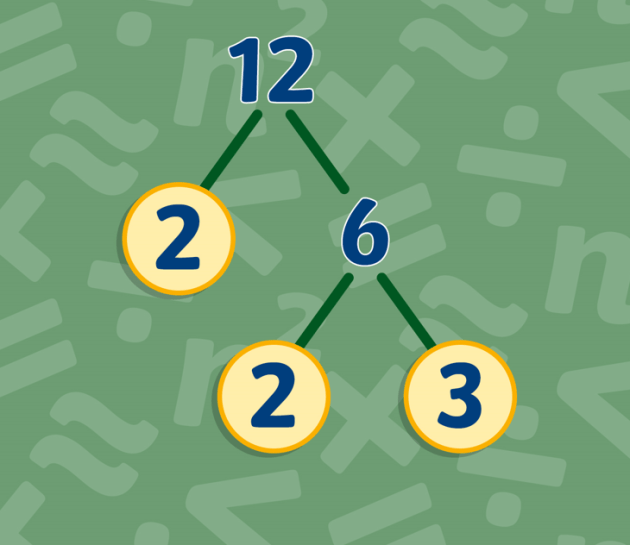
A factor tree (also known as a number tree) is a diagram that is used to find all the factors of a number. Starting with the number at the top of the tree, it then lists the various factors (numbers that divide equally into the number with no remainder) as ‘branches’. When each factor has been reduced to a prime number, the branches end and the tree is complete.
Factor trees are highly useful teaching tools because they represent factors in a graphic way. This can make the concept easier to understand for learners who might struggle to visualise Maths topics.
Factor trees have a number of important uses in Mathematics. For example, we can use them for:

Factor trees are ideal for investigating the properties of numbers and helping us to understand some important mathematical concepts and rules. For example, say we’re investigating a number that has more than one factor pair. If we create several factor trees to investigate each factor pair, our factor trees will show us that the prime factors of the original number are always the same, no matter which factor pair we choose.
You can create a factor tree in a few easy steps:
1. Write down the number you want to investigate.
2. Draw two branches coming from it.
3. At the ends of these branches, write the two numbers that make up a factor pair of the original number (two numbers that multiply together to make up the original number, with no remainder).
4. Is either of these numbers a prime number (only able to be divided by itself and 1)? If it is, you’ve found one of your prime factors! Circle this number and don’t draw any more branches from it - this branch ends here, as it’s gone as far as it can go.
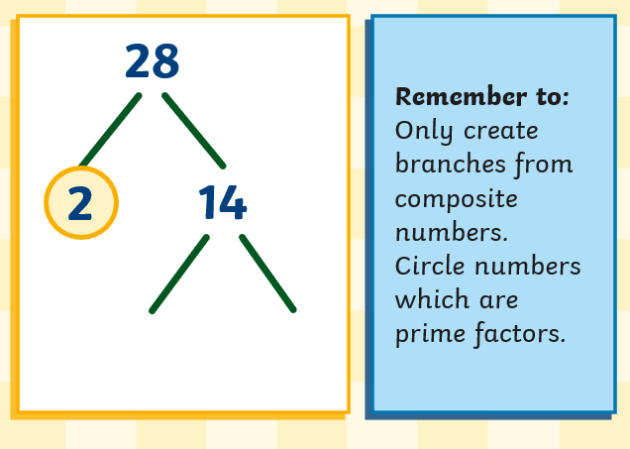
5. If either of your numbers isn’t a prime number, draw two more branches from it. Write down the numbers that form a factor pair for this number. Is either of these numbers a prime number? If so, circle it and don't draw any more branches from it.
6. Repeat this process until you have a prime number at the end of every branch. Your factor tree is complete, and you’ve found all the prime factors of your original number!
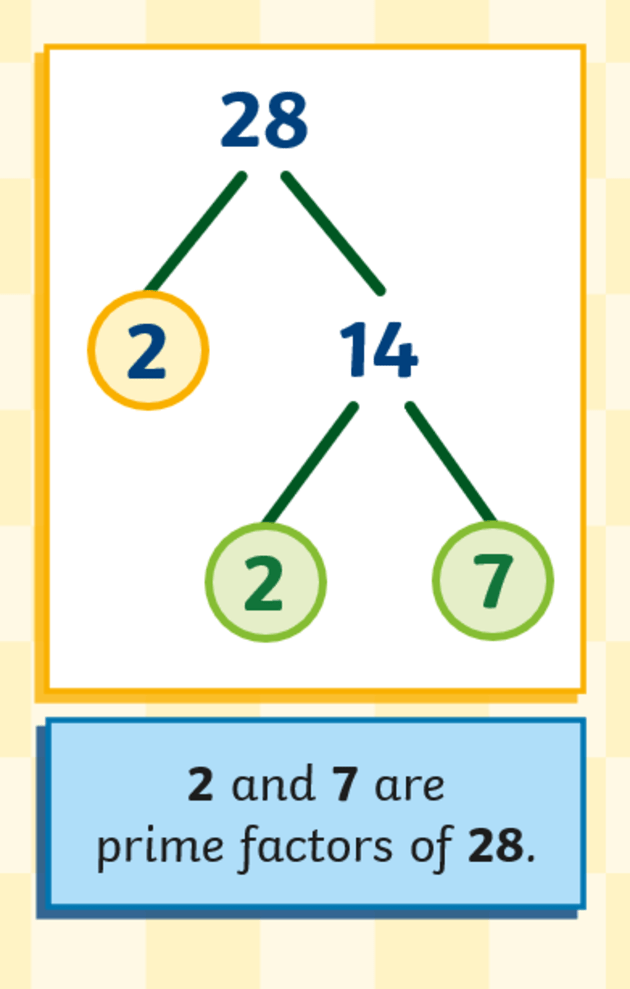
It’s also good practice to write the answer at the bottom of your factor tree. For example:
n = y x z
This ensures you’ve answered the question as well as showing your workings.
If our factors are square numbers or cube numbers, we should express the prime factors in index form. Say, for example, we’re drawing a factor tree for the number 36. Our factor pair could be 4 (2 x 2) and 9 (3 x 3).
So, the prime factors would be 2, 2, 3 and 3. Underneath our factor tree, we would express this as:
36 = 2² x 3²
Here’s a handy example so you can practise creating a factor tree for yourself.
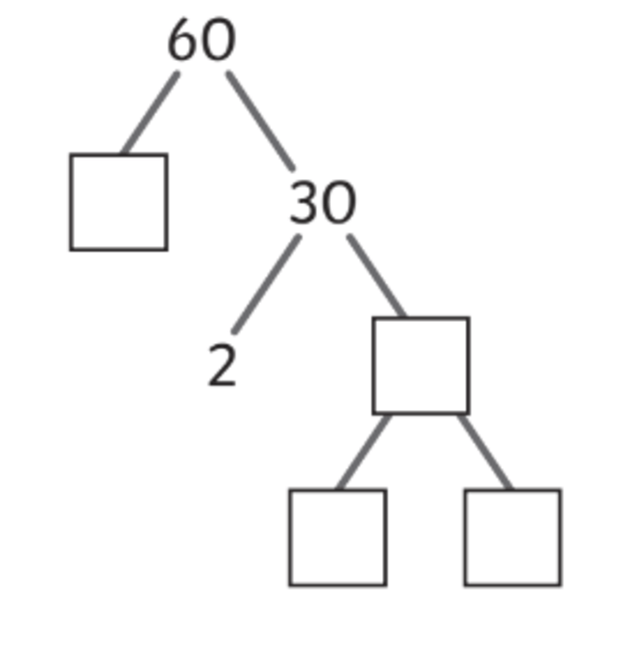
In this example, we’re finding the prime factors of 60. We’re told that one of the factors is 30.
60 ÷ 30 = 2
So, the other half of the factor pair must be 2. 2 is a prime number, so this branch ends here. On the other branch, we can see that one half of the second factor pair is 2. Which number multiplied by 2 makes 30?
That’s right, the answer is 15.
From here, we can see that there are two more branches, which means there must be two prime numbers that multiply together to make 15.
3 x 5 = 15
3 and 5 are both prime numbers, so all our branches are now complete.
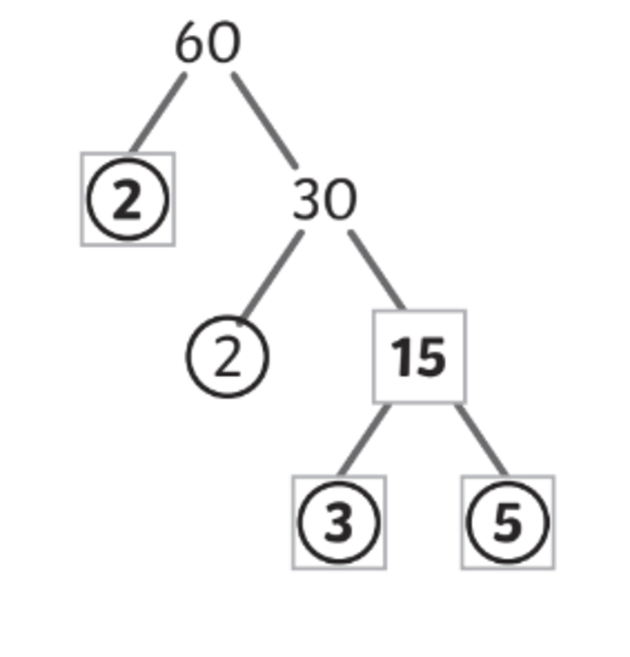
So, the prime factors of 60 are 2, 2, 3 and 5. Let’s express this in index form:
60 = 2² x 3 x 5
Good job!
It’s important to remember that 1 is not a prime number - it can only be divided by itself, so it only has one factor. As it isn’t a prime number, it shouldn’t be included or given as an answer in a factor tree.
Factors are numbers that another number can be divided into. This means factor pairs can only ever be multiplied, not added together.
Say, for example, we had a factor pair of 6 and 4. By multiplying them, we can correctly identify that they’re factors of 24. However, if we added them together instead, we’d think they were factors of 10, and our whole factor tree would be wrong.
If we’re working with large numbers, factor trees can get quite complicated! It’s important to give yourself enough space to work with on the page, so you can clearly see where each branch ends. It might help you to circle or highlight each prime factor as you arrive at it. This way, you’ll easily be able to see all the numbers you need to multiply together once your factor tree is complete.
Students usually start learning about factor trees in Years 5-6, and they become a more regular part of the Maths Curriculum from Year 7 upwards. If you’re teaching your classes about factor trees, Twinkl has plenty of handy resources to make your teaching life easier. Here are a few you might enjoy.
This Prime Factorisation Worksheet Pack is a great way to introduce the topic to your Year 5-6 students. It gives your learners a refresher on prime numbers before introducing them to the concept of prime factors and factor trees, so they’ll have a solid understanding of the idea.
If you’re planning a lesson on factor trees for a Year 7 or 8 class, this HCF, LCM and Prime Factorisation Lesson Pack does some of the heavy lifting for you! It contains everything you need for a complete lesson plan: a handy PowerPoint presentation, worksheets and a variety of engaging teaching ideas on highest common factors, lowest common multiples and prime factors.
Once your Year 7-8 students are confident enough to tackle factor trees on their own, why not give them this Prime Factors Homework Worksheet to try? They’ll need to complete a variety of factor trees, progressing in the level of challenge.
All these resources have been made by experienced teachers in line with the Australian Curriculum, giving you total confidence.
For more information on prime factor decomposition and factor trees, take a look at this helpful video from Twinkl Beyond.